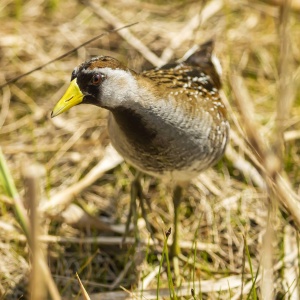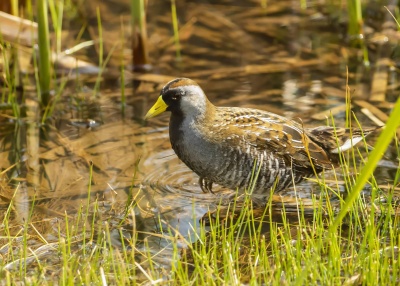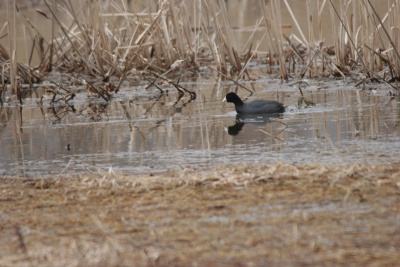Difference between revisions of "Rails"
Ken Czworka (talk | contribs) (→Sora) |
Ken Czworka (talk | contribs) (→Sora) |
||
| Line 17: | Line 17: | ||
Soras make their homes in freshwater wetlands with emergent vegetation such as cattails, sedges, and rushes. During migration and winter, they also use brackish marshes, flooded fields, and wet pastures. | Soras make their homes in freshwater wetlands with emergent vegetation such as cattails, sedges, and rushes. During migration and winter, they also use brackish marshes, flooded fields, and wet pastures. | ||
| − | [[File:Sora1.jpg| | + | [[File:Sora1.jpg|300px|thumb|left|Sora (Porzana carolina) - © Scott Dietrich]] |
[[File:Sora2.jpg|400px|thumb|center|Sora (Porzana carolina) - © Scott Dietrich]] | [[File:Sora2.jpg|400px|thumb|center|Sora (Porzana carolina) - © Scott Dietrich]] | ||
Revision as of 21:53, 11 February 2022
|
|
Contents
Yellow Rail
(Coturnicops noveboracensis)
King Rail
(Rallus elegans)
Virginia Rail
(Rallus limicola)
Sora
(Porzana carolina)
Soras are small, chubby, chickenlike birds with long toes. They have a stubby bill unlike other rails in the United States and Canada, which have longer bills. They frequently hold their short tail cocked up.
Soras are mottled gray and brown with white-edged feathers, but the feature that stands out the most is their yellow candy-corn bill. Other notable features include a black mask and throat patch, vertical white lines on the sides, and a white patch under the tail. Females tend to be less brightly colored than males and have less black on the face and throat. Juveniles also lack the black mask.
Soras walk through shallow wetlands pushing their head forward with every step while nervously flicking the tail upward, exposing the white undertail feathers. They tend to forage in dense vegetation, but also venture into open areas from time to time. Their long toes help them walk on top of floating mats of vegetation.
Soras make their homes in freshwater wetlands with emergent vegetation such as cattails, sedges, and rushes. During migration and winter, they also use brackish marshes, flooded fields, and wet pastures.
Common Moorhen
(Gallinula chloropus)


